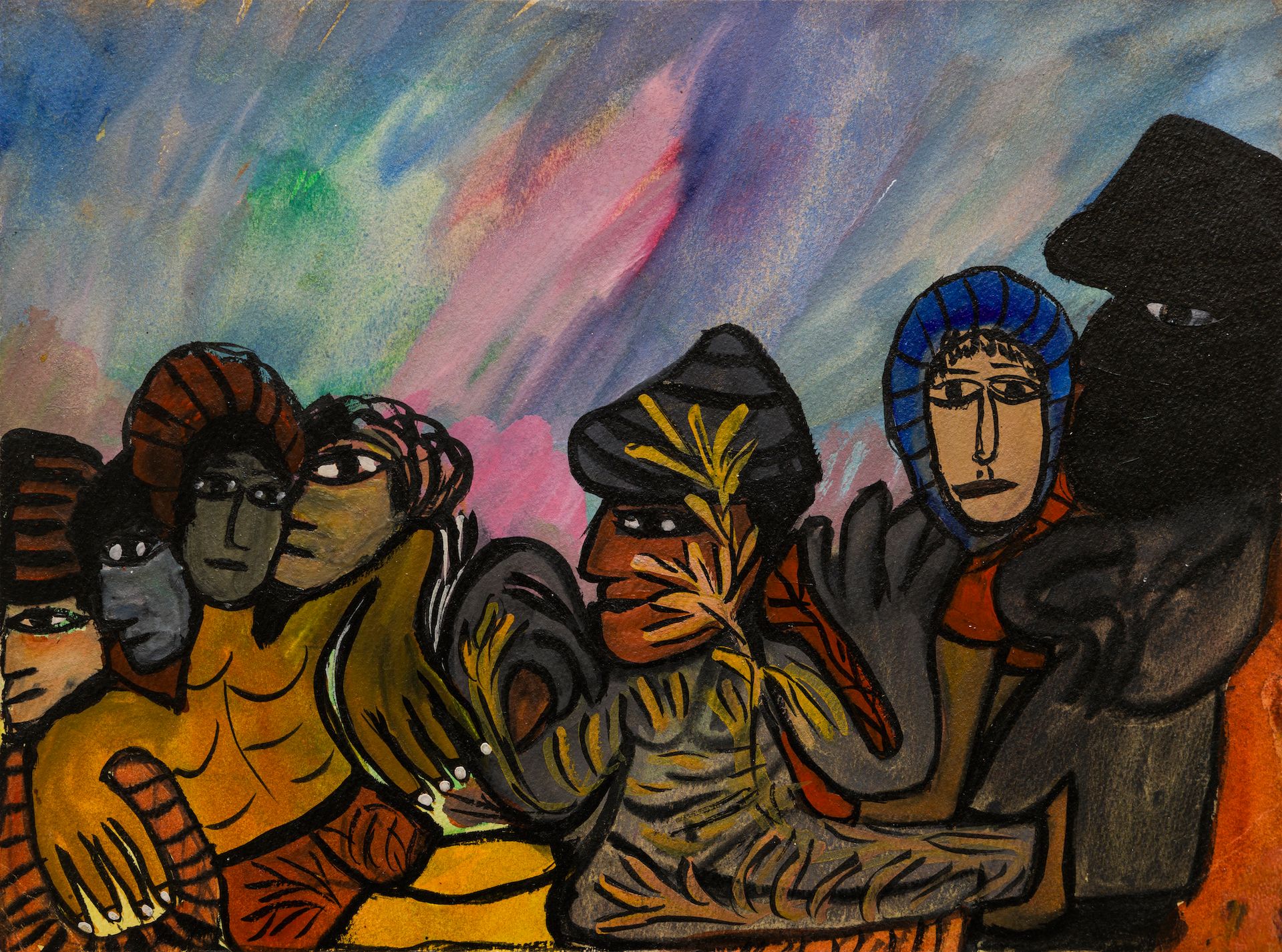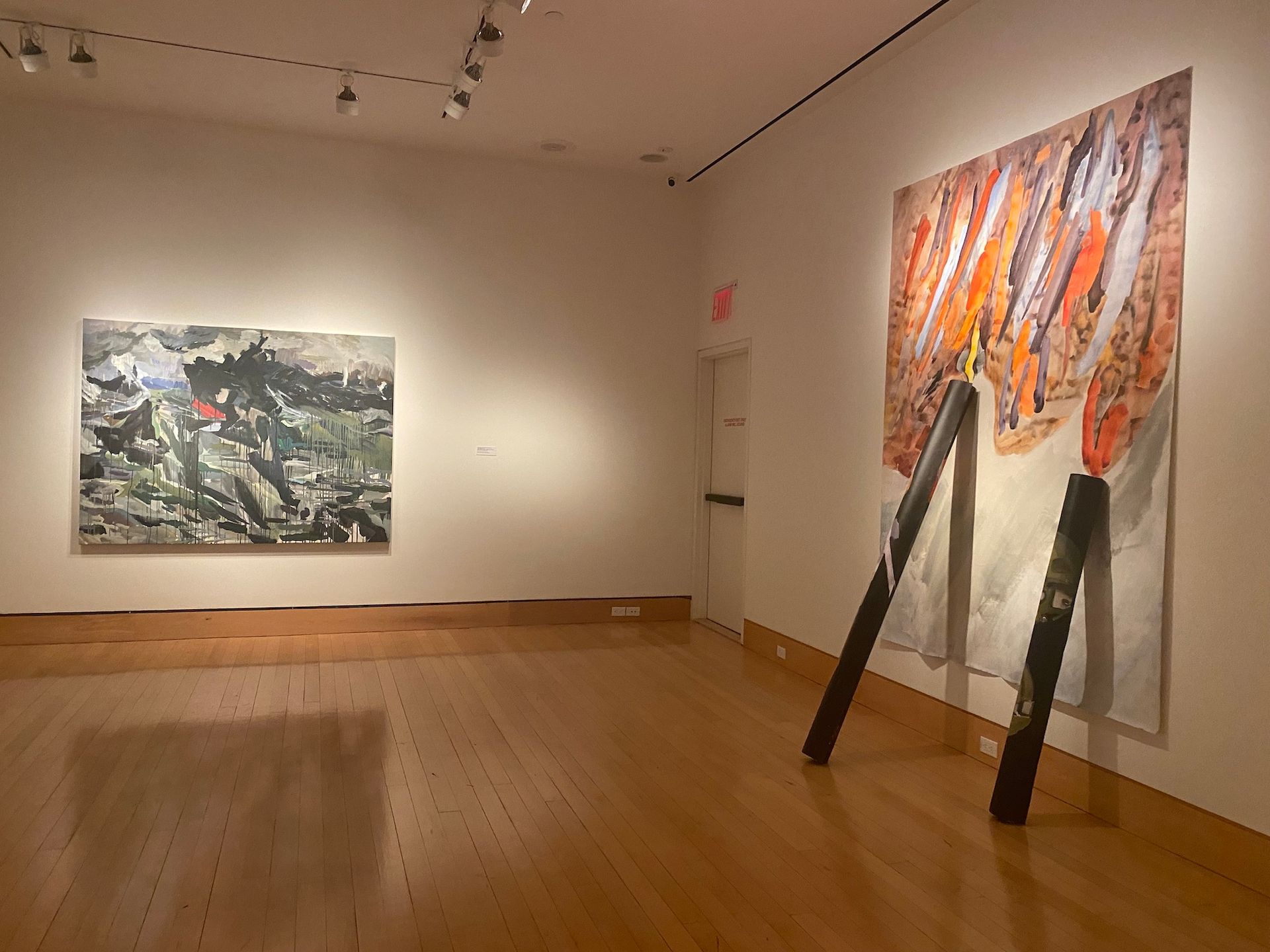Dripping artist Janet Sobel, pioneer of dripping before Jackson Pollock, has grown in popularity in recent years and is now the subject of a solo exhibition at New York’s Ukrainian Museum. The show, war time(until September 2), features Sobel’s moving primitivist paintings from the early 1940s, which reflect his fears of World War II and his worries about the fate of his loved ones in his native Ukraine.
Peter Doroshenko, the Director of the Ukrainian Museum, says he was “stunned” when he encountered Sobel’s work nearly 12 years ago at the Museum of Modern Art. By the time he returned to the United States from kyiv (where he had served as PinchukArtCentre‘s founding president), to take over the general management of Dallas Contemporary.
“She was an artist I had never heard of, but the label said Ukrainian,” says Doroshenko, who is Ukrainian-American and a curator. war time. This was particularly striking, he says, because major museums then undoubtedly identified Ukrainian-born artists such as Kazimir Malevich as Russians. Since the beginning of Russia’s War in Ukrainethis practice has be subject to scrutiny.

Janet Sobel, Untitledcirca 1942. Gary Snyder Private Collection Luis Corzo. Courtesy of Ukrainian Museum, New York
Sobel, born Jennie Olechovsky in Dnipro (then Katerynoslav) in or around 1893, fled the pogroms in which her father was believed to have been killed, and with surviving members of her family came to New York in 1908. She started to paint at age 44. , encouraged by her art student son. According to Doroshenko, his works from the World War II era are particularly relevant in light of the current war.
“She had two sons who were stationed in Europe during World War II and [was] constantly trying to get in touch with other parents in Dnipro, and never hearing from them,” he says. Dnipro is now frequently under Russian bombardment.
The exhibition “begins with some of her early drawings, which were heavily influenced by Ukrainian folk themes, something she remembered from Ukraine as a child and later saw in the neighborhood East Village Ukrainian,” Doroshenko said. “She just started drawing things that she remembered and started intertwining them with her reality at that time.”
Sobel’s work has always had a strong figurative component. “Even in the most abstract works, there was always something figurative: eyes, a face, a hand, a silhouette,” says Doroshenko. Sobel burst onto the New York scene with drip paintings, “essentially ahead of his time”, adds Doroshenko, and “other artists such as Jackson Pollock infringed or somehow adopted the style of his work for theirs”. Art critic Clement Greenberg (a friend of Pollock) described Sobel’s work as “the first truly ‘all-over’ I have ever seen”.

Janet Sobel, Untitledcirca 1942. Gary Snyder Private Collection Luis Corzo. Courtesy of Ukrainian Museum, New York
Sobel’s artistic career was brief. She largely disappeared from the New York scene to focus on raising her five children and supporting her family’s jewelry business, leaving minimal archival traces. She died in 1968.
Former New York gallerist Gary Snyder has championed his work since his first exhibition in 2002. The works of war time are taken from his private collection. Relatives of Sobel who settled in Houston loan works for a 2024 exhibition to the Menil collection.
“I was fascinated by those early works and felt they were lesser known, but I was also intrigued by all those war images, and it became a priority long before I knew how much it could be poignant,” Snyder says. “So a lot of what she painted was beyond her mind, her unconscious or her subconscious,” he adds, referring to the influence of Sobel’s childhood in Ukraine. is a child, under the age of 14. Rather than being an old child-bearing person, she is channeling the young child that she was.
Contemporary artist Lesia Khomenko echoes Sobel’s experience on the museum’s second level in her own solo exhibition, Image and Presence (also until September 2). Khomenko fled the Russian invasion with her young daughter while her husband remained to serve in the Ukrainian Armed Forces. Four of his series illustrating various aspects of warfare, including the new AJS series (for “After Janet Sobel”), are exhibited.

Installation view of Lesia Khomenko: image and presence at the Ukrainian Museum in New York Courtesy of Lilia Kudelia
Khomenko’s works deconstruct the socialist-realist battle scenes of Soviet Ukrainian artists and address war and cyberspace as well as his experience of conflict and evacuation. In the AJS series, she dialogues with Sobel on the ruptures and the resilience of Ukrainian history.
Khomenko, who recently had his first solo exhibition in the United States at the Fridman Gallery in New York, felt “the strong link between my practice and his generation”. She says that feeling of connection was reinforced by reading Dore Ashton The New York School: A Cultural Review (1965), which highlights the role of immigrants in the development of the city’s modern art scene.
“I started researching his World War II period of pre-abstract works and found a lot in common with my own practice,” Khomenko says. She placed Sobel’s “soldiers, simplified figuration, weapons” in a separate canvas and folded them into tubes, so that they “are both abstract and refer to black mortar weapons as in the play original Sobel”, connecting generations of the Ukrainian diaspora. She adds, “These are two different stories and I’m looking for a perspective to find something that could tie it all together.”
- Janet Sobel: In WartimeAnd Lesia Khomenko: image and presenceuntil September 2, Ukrainian Museum, New York
